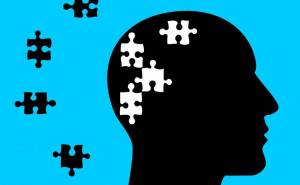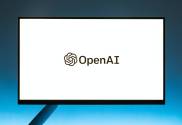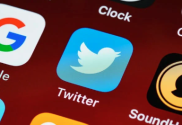
Amid the ‘Great Disconnection,’ AI-Based Games Can Foster Inclusion & Drive Retention
It’s no secret that keeping great employees is critical to enterprise success. But a time of reckoning came in 2021, when the employment dam burst open amid the pandemic. Workers jumped into the captain’s seat and demanded better workplace experiences. When employers failed to meet their needs, they resigned and sought out other places of employment. Or, they went to work for themselves. This Great Resignation, in which over 50 million Americans voluntarily quit their jobs, led to the phenomenon known as quiet quitting – referring to the supposed millions of people who are meeting the minimum requirements of their job description, but not going above and beyond in time, effort, or enthusiasm.
Now, in the face of massive layoffs, brought about by rising labor costs and slower business growth, the waters are once again becoming choppy. Workers are on edge, worried about the security of their jobs and their financial well being, which has also eroded their passion and inspiration. Projects are now overshadowed by a loss of connection between their tasks and a greater sense of purpose. We’ve entered a period that might be best described as the “Great Disconnection.”
To prevent increased burnout and absenteeism, and further loss of creativity, employers must reinvest in employees and their needs to reignite interest in the work they do and the people they work with. Inclusion has been identified as a critical factor in workplace happiness with a meaningful impact on retention. According to Boston Consulting Group’s (BCG) latest BLISS Index report, there’s now an undeniable connection between inclusion and retention. If people feel included, the Index shows, their happiness and overall well being improve and retention rates increase. While there are many factors that drive inclusion, technology is one tool for creating an inclusive environment with AI-based games shown to promote inclusion and drive retention.
A Collision of Negative Forces is Causing a ‘Great Disconnection’
Deloitte recently noted: Change is happening faster than ever, and much of it is different from what we expected — making the mission even more challenging. This combination is calling for new ways of thinking to solve human, workforce, and societal problems and position your organization to thrive and adapt to new fundamentals.
Change isn’t always positive. Over the last several years, changes in how we work, where we work, why we work, and the technologies that help us perform that work have been in a constant state of flux. Many of these changes began unfolding well before the onset of COVID-19 and are now accelerating because of the economic downturn and continued seismic shifts in the employee-employer dynamic.
Employers are currently facing a historic amount of uncertainty and disruption. According to McKinsey, 14% of the workforce worldwide will likely be forced to change jobs in the coming years as artificial intelligence, automation, and other technologies push traditional jobs toward obsolescence. Current layoffs and a less than stellar economic trajectory are also shifting job requirements and accelerating the urgency of upskilling and reskilling today’s workforce.
BCG writes: “Employee stress is at an all-time high, and only 21% percent of workers feel engaged at work, according to a recent Gallup report. Even more worrying, 2022 research from Future Forum and Boston Consulting Group found that 57% of desk-based workers are likely to look for a new job in the coming year, and 43% of “deskless workers”—those who need to be physically present to do their jobs—are similarly at risk of quitting [despite being nervous about potential layoffs].
After what seemed like an upswing, this collision of negative forces is causing a deterioration in business and the workplace – a.k.a. the Great Disconnection.
The Case for Inclusion
To overcome the challenges in the months ahead, employers will need to find creative, low-cost, high-impact ways to retain their best employees. As a first step, many companies are trying to build a culture where everybody belongs. This is a great approach as “inclusion in the workplace is measurable, actionable, and good for your business, even in a tough economy.”
Inclusion happens when organizations equally hear and value the input of every member of a diverse team while treating those members with respect. Inclusivity is also about access and opportunity. For a workplace to be truly inclusive, everyone in it should have the same access to resources, training, guidance, promotional opportunities, and anything else that could contribute to the success of the individual and/or the organization.
Study after study showcases the strong links between diversity and inclusion and professional success:
- Organizations with a diverse workforce outperform non-diverse competitors by 35%;
- Companies that publicly embrace and support diversity and inclusion often attract higher-quality candidates;
- Having a diverse workforce allows an organization to better understand consumers, for instance putting together marketing teams that mirror the demographics that will be targeted in an upcoming campaign;
- Highly inclusive organizations are more profitable, generating as much as 2.3x more cash flow per employee; and
- Diverse organizations that emphasize inclusivity help their employees feel more engaged and engaged employees are more loyal, call out sick less, and are 17% more productive overall.
There are benefits to laying out corporate guidelines for inclusivity and respect too. When employees feel safe and respected, they’re more likely to express themselves and share ideas. The BLISS Index further substantiates these findings, showing that when a company marginally increases their inclusion score, from 55 (10% below average) to 75 (10% above average), 75% of employees report feeling happy, as opposed to 25% before, and the number of employees at risk of leaving is cut in half. Our work has shown that inclusion increases an employee’s likelihood of retention by up to 29% in as little as 12 weeks. For a company with 1,000 employees, that’s approximately $4 million saved in recruiting and hiring costs annually.
How Technology Creates an Inclusive Environment
Today, technology is playing a vital role in helping to make the workplace more diverse and inclusive. Organizations large and small now depend on artificial intelligence, machine learning, AR/VR, and a variety of other emerging technologies to open the door to greater equality and positively impact their workforce. Technology can support a dynamic environment, offering greater levels of transparency and equal access to information and employment opportunities, while acting as a unifier – bridging gaps in communication and promoting better connections between individuals and teams.
For example, artificial intelligence and machine learning are being used to help eliminate bias in hiring by removing identifying information from resumes and applications, and by matching candidates with job openings based on their skills and experience. They can also help companies track diversity metrics and identify areas where they need to improve.
Case in point: In June 2021, Microsoft announced that it was launching a new AI-powered tool to help companies eliminate bias in their hiring processes. The tool, called Microsoft Viva Insights, uses AI and machine learning to analyze job descriptions, resumes, and other hiring materials and identify language that may discourage certain groups of candidates from applying.
Meanwhile, accessibility tools like screen readers, text-to-speech software, and alternative input devices are helping employees with disabilities to perform their jobs more effectively. They aim to ensure that digital content is accessible to everyone, regardless of their abilities.
Some diversity and inclusion training solutions are also using AR/VR to help educate employees on diversity and inclusion topics, such as unconscious bias and cultural competence. These tools are helping to promote understanding and empathy among employees and create a more inclusive work environment.
Using AI-Based Games to Foster Inclusion and Drive Retention
Retaining employees and creating teams that are truly invested in an organization, and one another’s success, are some of the biggest challenges companies face. This can become even more problematic the larger an organization gets and more diverse its hires become. Diversity, equity, and inclusion (DEI) initiatives and employee-centric programming are effective ways to foster inclusion among employees and teams. However, inclusion strategies are wide ranging, and the specifics can look very different from organization to organization.
Adding to these challenges is the fact that traditional programs – scenario-based guides, skills and personality assessments, lectures, panels, surveys, and pre-recorded videos, among others – can feel forced, uncomfortable, and often exclusionary. These might be helpful in disseminating information, but these strategies fall short when it comes to fostering inclusivity, mainly because they occur as one-offs, siloed approaches that don’t focus on the ins-and-outs of everyday work life and the connections between people. What’s missing is real-world recurring experiences that allow humans to practice and continually develop core skills such as communication, listening, vulnerability, empathy, and compassion.
Games, on the other hand, inspire employees to exercise key skills without feeling like they are “working the muscle”, while offering both rules and randomness that mirror the real world. Ultimately, life is uncertain, and thus there is a need to understand how to adapt, pivot, and reflect accordingly.
Games also tap into the brain’s reward center and typically require quick thinking, which traditionally disarms players (although, some are more competitive than others). And, games are about the luck of the draw, allowing participants to enjoy a sense of freedom while still feeling in control. Each participant is likely not going to win every time, but the desire to work harder the next time they play is usually present.
In summary, games are a great way to not only foster inclusion, but also deepen understanding and retention of information and skills learned. These types of solutions are effective because they make personal development and growth enjoyable to the point that it feels like dynamic team-building versus static, independent learning. We all began our educational journey learning through play more often than not alongside a classroom of friends.





